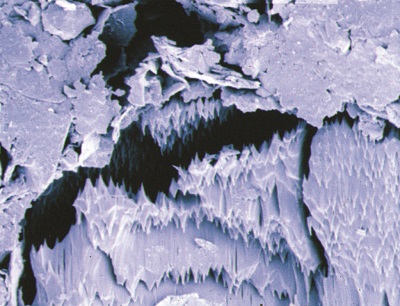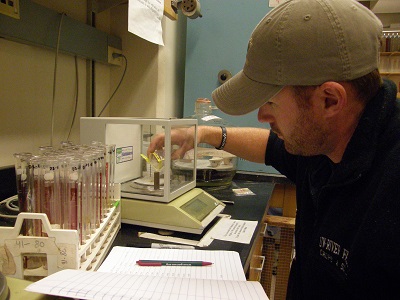FORENSICS AND ARCHAEOLOGY

This is soil, zoomed in to the mineral level. You can see the jagged edges that are unique to other edges
There is no escaping the fact that some humans are capable of very malicious activities. When dead bodies turn up, or are missing, experts in soil forensics can take over to try and link suspect activity with their locations. Soil forensics is an interdisciplinary field that uses soil biology, chemistry, mineralogy, formation, physics, and ecology to help solve crimes, including murder, environmental pollution, and animal and plant thefts.
Soils are like footprints. Each one is different based on chemical, biological, and physical combinations, including different colors, minerals, particle size and shape, geology, and different combinations of bacteria. Soils on the inside of a tire rim or on the sole of the shoe can help provide travel patterns of suspects, and can prove or disprove alibis. However, it is very difficult to use soils in court, because they are rapidly changing, and alter chemically, physically, and biologically when they get disturbed, and can require large sample sizes. However, combing a few of these characteristics, we can make links in similarities in soils.
Soils have a unique “DNA” just like people do! Even though less than 1% of bacteria in the soil can be cultured, there are methods that can find target sequences of DNA. This provides a means to profile the soils biological signatures, and are done using 200 mg of soil. Many different ecosystems have similar soil types and soil forming factors, which causes similar types of plants to grow. These plants, in turn, affect the rate at which soils form. Certain types of plants only grow on certain soils in certain regions of the country. These different pollens and soil types can give evidence that people have been there.

Samples are processed and analyzed in a laboratory for many different properties
Soil chemistry and mineralogy are combined together to create different types of soils. There are 20 minerals that can be found in soils. Soil mineralogists and chemists can use X-ray diffraction to create a distinct soil profile. This now can be done with 10 mg of soil. Soils can have different types of organic matter in them, which contain different proportion of waxes and substances that are chemically traced. also can change their environment, and high levels of chemicals get deposited in certain regions can also trigger an investigation of a certain area, or help narrow down a location to find a body.



